 |
 |
 |
| |
IMPACT OF COVID-19 ON COMMERCIAL LABORATORY TESTING FOR HIV IN THE UNITED STATES
|
| |
| |
CROI 2021 March 6-10 Reported by Jules Levin
Kevin P . Delaney1, Praveena Jayanthi2, Brian Emerson1, Weiming Zhu1, Marc A. Pitasi1, Ya-Lin A. Huang1, Kathleen P. Hartnett1, Karen W. Hoover1
1Centers for Disease Control and Prevention, Atlanta, GA, USA, 2ICF International, Atlanta, GA, USA
Background: On March 13, 2020, the United States declared a national emergency to combat coronavirus disease 2019 (COVID-19). Many states and localities issued shelter-in-place or stay-at-home orders to reduce the spread of COVID-19, limiting movement outside the home to essential activities. Since that time the pandemic has been associated with documented disruptions in routine preventive and other nonemergency care. Screening for HIV infection as well as HIV-1 viral load monitoring for persons living with HIV have likely been affected by the pandemic. Laboratory data from the National Syndromic Surveillance Program provide one way to assess the impact of the COVID-19 pandemic on HIV screening, HIV diagnoses and HIV-1 viral load monitoring.
Methods: Using data reported daily to CDC from a large commercial laboratory, we identified lab test reports for HIV screening or HIV-1 viral load testing. For reports with HIV screening test results, we assessed how often the final HIV test algorithm result was confirmed positive. We plotted daily counts of each of the three HIV test types and 7-day moving averages. We also calculated the difference in the number of each type of test performed between March 13, 2019 and September 30, 2019 from those performed during the same time period in 2020.
Results: Compared with number of tests performed in 2019, there were 669,847 fewer HIV screening tests, 4,910 fewer confirmed HIV-1 diagnoses, and 67,694 fewer HIV-1 viral load tests performed during March 13 to September 30, 2020. The 7-day average number of HIV tests performed dropped dramatically after March 13, 2020 and did not recover to 2019 levels by September 30, 2020 (Figure).
Conclusion: During the national COVID-19 emergency, routine screening for HIV and HIV-1 viral load monitoring may have been delayed or foregone by many patients and clinicians. Undiagnosed HIV infection and higher viral loads could have led to increased morbidity and transmission. Although the number of tests being performed has partially recovered from a nadir this spring, testing at this commercial lab has not yet rebounded to make up what was lost. Healthcare system adaptations including home testing, home sample collection, and telemedicine visits for HIV care can help to address this shortfall as the COVID-19 pandemic persists in the US.
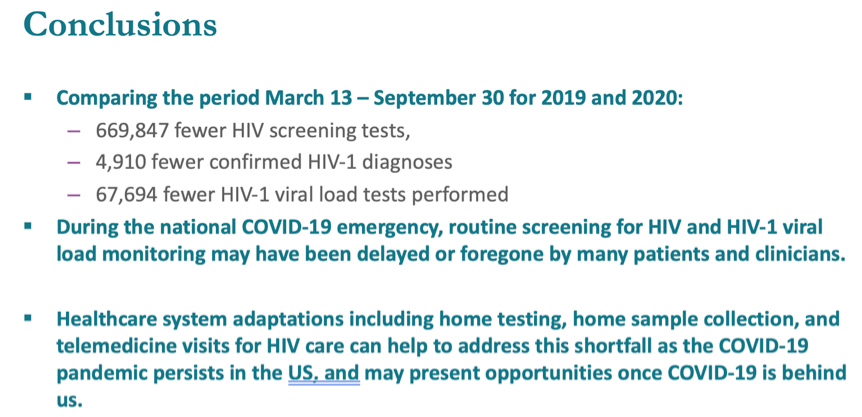
Remember that these data are from a single commercial laboratory, and that if this trend is similar across other laboratories they may have conducted millions fewer HIV tests in 2020 compared to 2019.
There is still a shortfall in both HIV screening and HIV viral load monitoring as the COVID19 pandemic persists in the US. However, these new care modalities that sprung up spontaneously in response to the pandemic may also be an opportunity to expand access to HIV testing as we seek to bring closure to and recover from the COVID 19 pandemic and, eventually end the HIV epidemic as well.
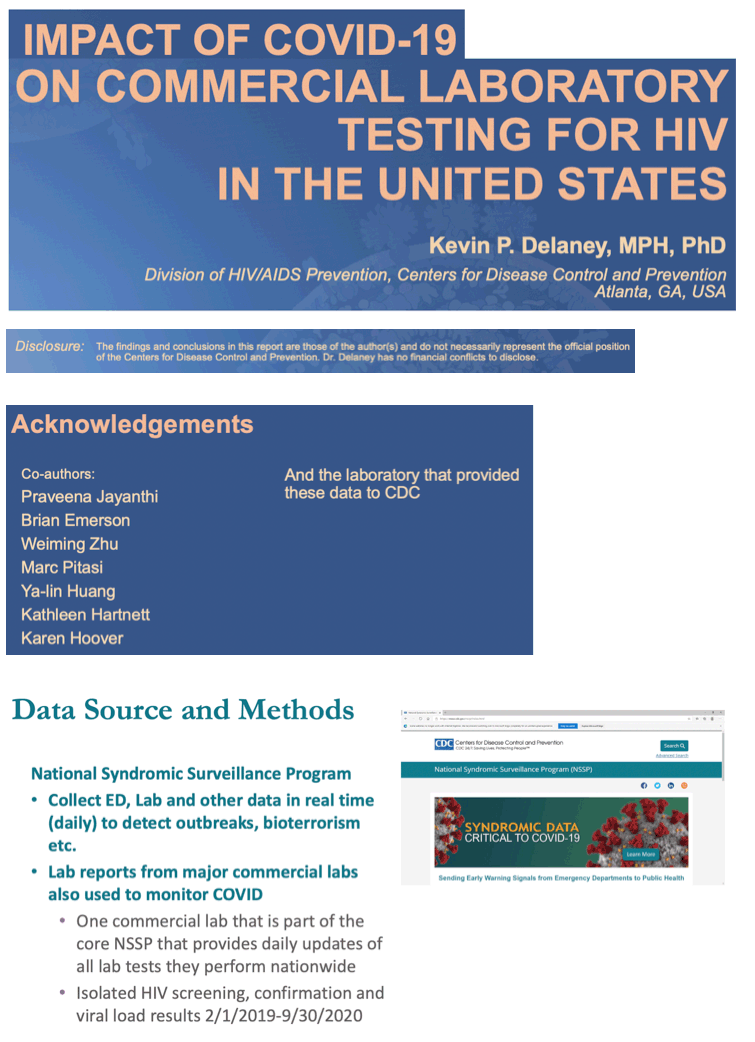
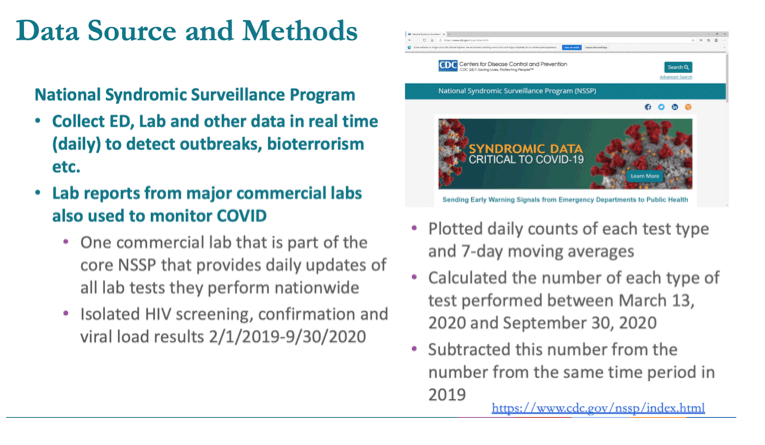
Shown here are the daily total number of HIV antigen antibody screens, and in orange the 7 day moving average. You can see that in general testing volumes in 2019 were pretty flat, except around major US holidays, but that testing fell off dramatically in March 2020 and has not fully recovered.
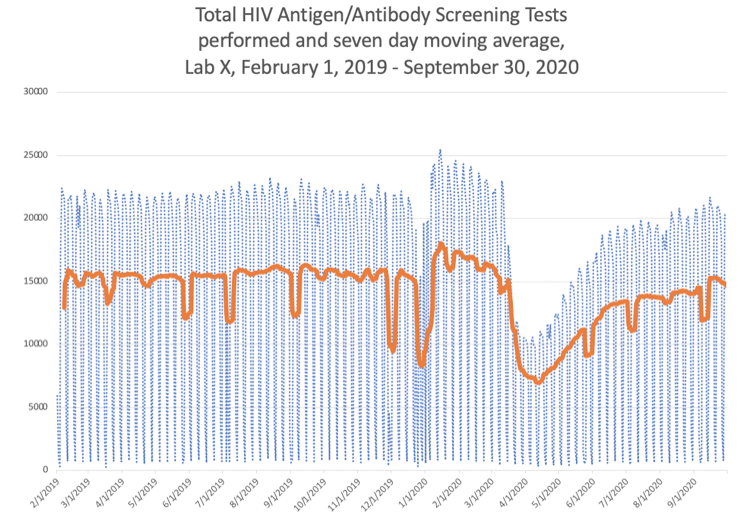
This graph overlays testing volumes for 2019, in lighter blue, with testing volumes for the same time frame in 2020. For March 13 through April 13 there was a 45% reduction in testing in 2020 compared to 2019.
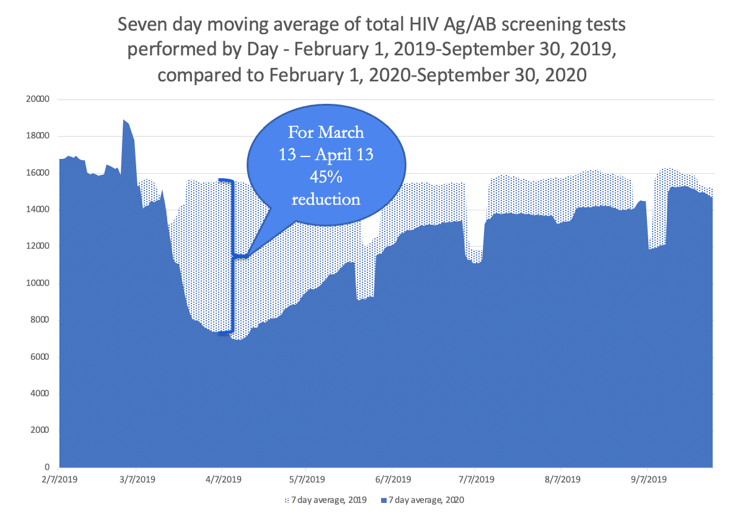
By June testing volumes had recovered somewhat as healthcare and the rest of society began to open back up, but for June testing volumes were still off by 8% for 2020 compared with 2019.
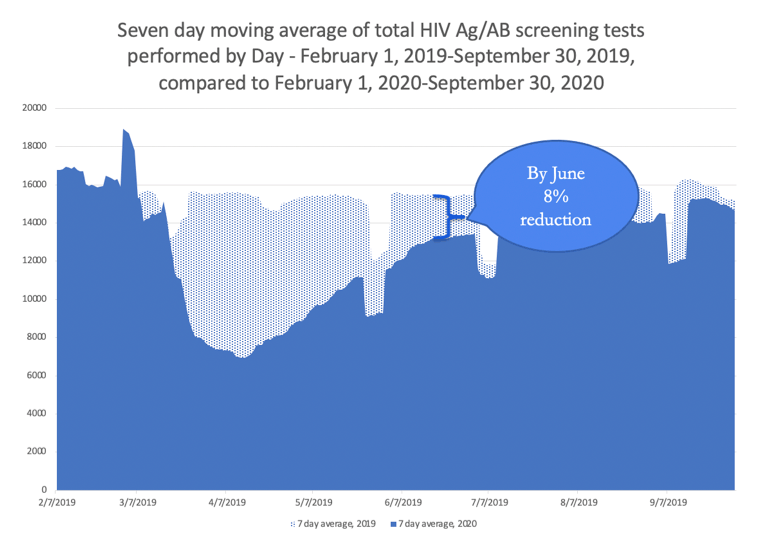
This is a graph of the daily volumes for the Aptima qualitative Nat test that is the 3rd test in the CDC-recommend HIV diagnostic algorithm, and the 7 day moving average shows a very similar trend to the HIV screening tests.
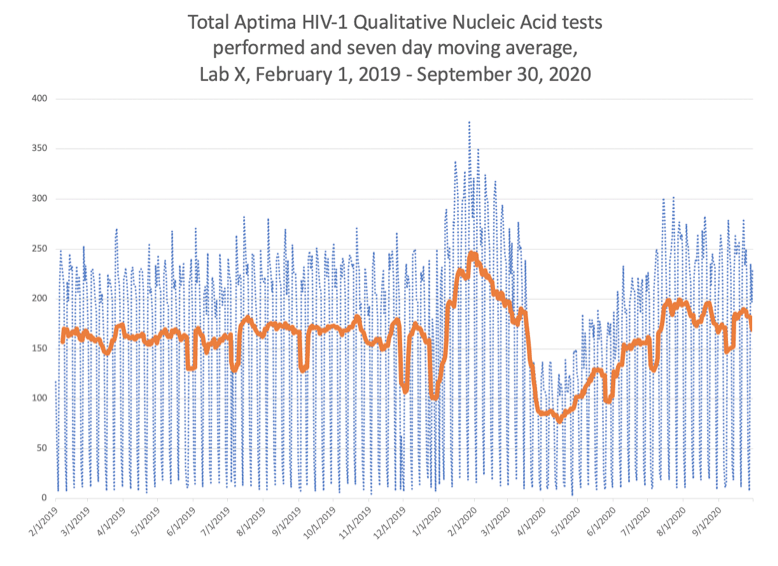
Likewise for HIV-1 quantitative viral loads that are performed to monitor the HIV care of persons living with previously diagnosed HIV.
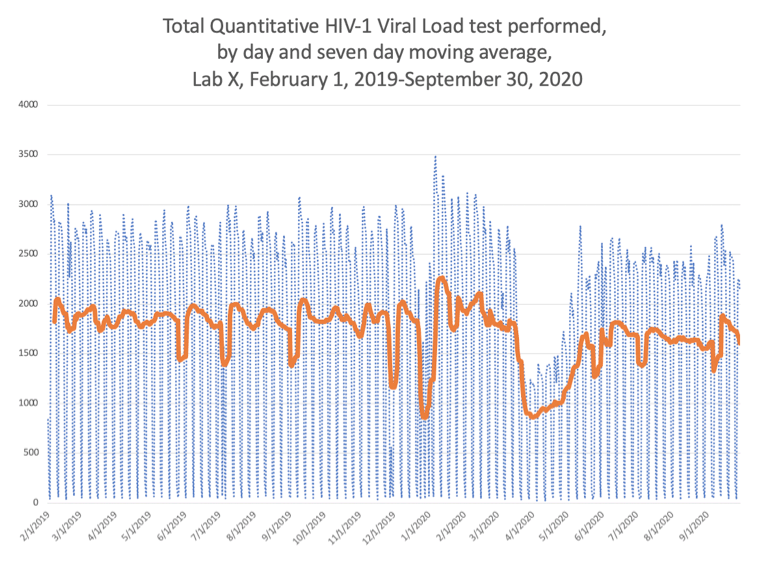
|
| |
|
 |
 |
|
|